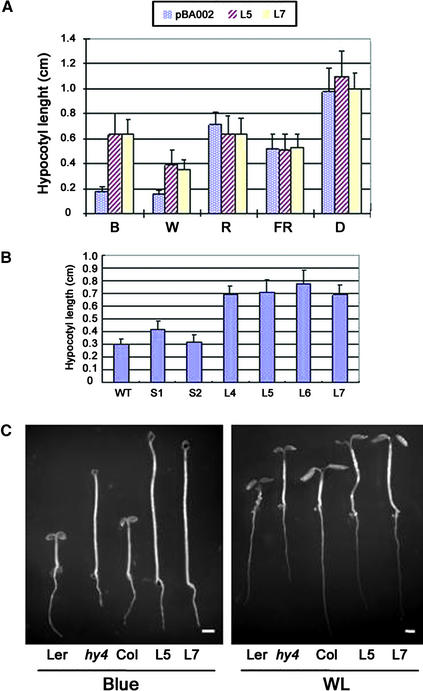Figure 2.
Phenotypic Analysis of AtPP7-Deficient Arabidopsis Seedlings in Response to Different Light Treatments.
(A) Hypocotyl lengths of vector control seedlings (pBA002) and two AtPP7 antisense transgenic Arabidopsis seedlings (L5 and L7) in darkness (D) and in response to blue (B; 12 μmol·m−2·s−1), white (W; 32 μmol·m−2·s−1), red (R; 25 μmol·m−2·s−1), and far-red (FR; 4.4 μmol·m−2·s−1) light irradiation. n = 30, and standard error bars are shown.
(B) Hypocotyl lengths of wild-type (WT) and six AtPP7 antisense transgenic Arabidopsis seedlings (S1, S2, L4, L5, L6, and L7) in response to blue light irradiation. The fluence rate of blue light is the same as in (A). Col was used as a wild-type control.
(C) Hypocotyl lengths of AtPP7-deficient seedlings and CRY1-deficient (hy4) seedlings in response to white light (WL) and blue light irradiation. Fluence rates of blue and white light are the same as in (A). Col was used as a wild-type control for AtPP7-deficient seedlings, and Landsberg erecta (Ler) was used as the wild-type control for hy4. Bars = 1 mm.

